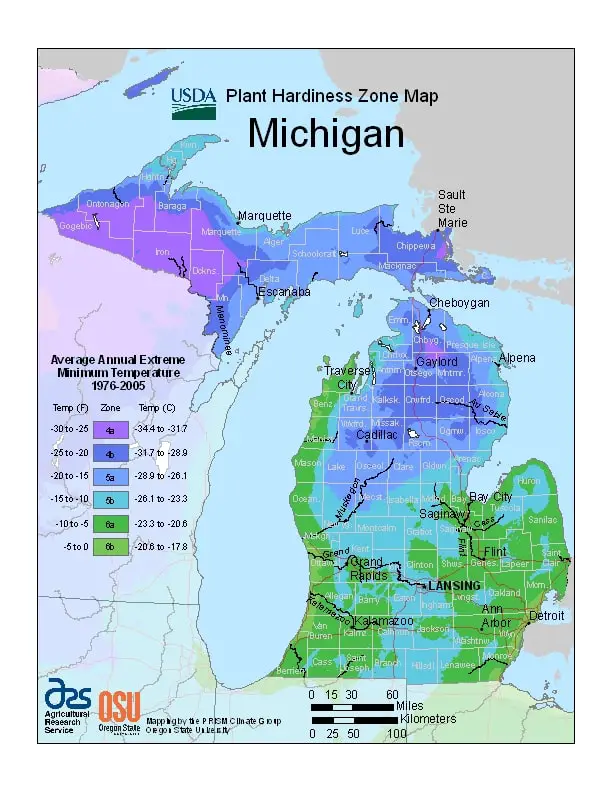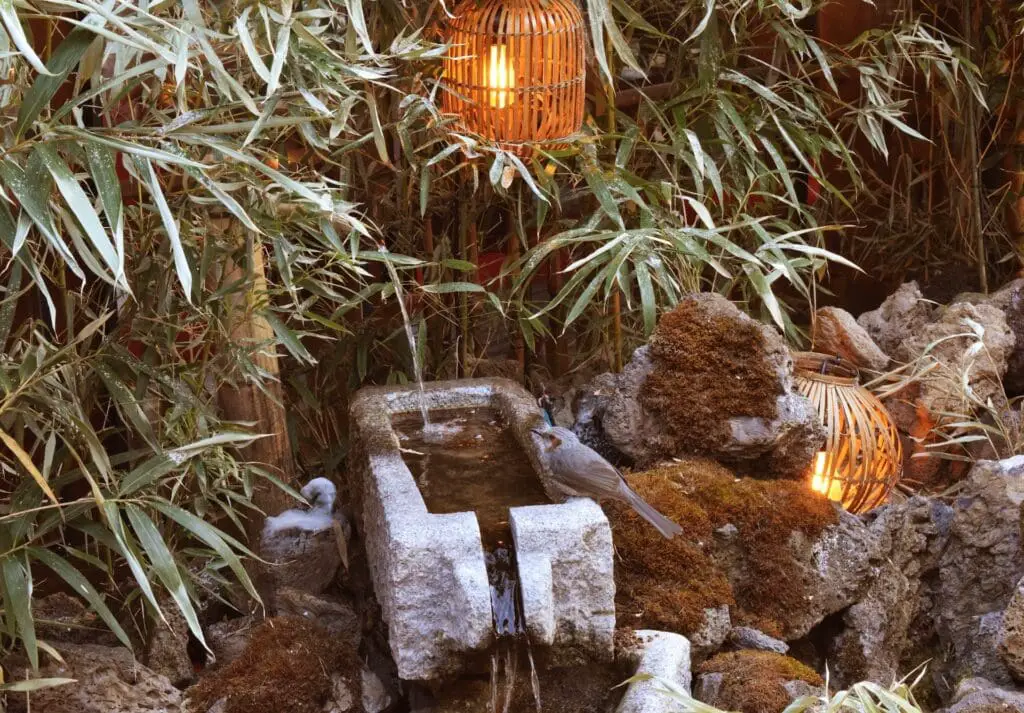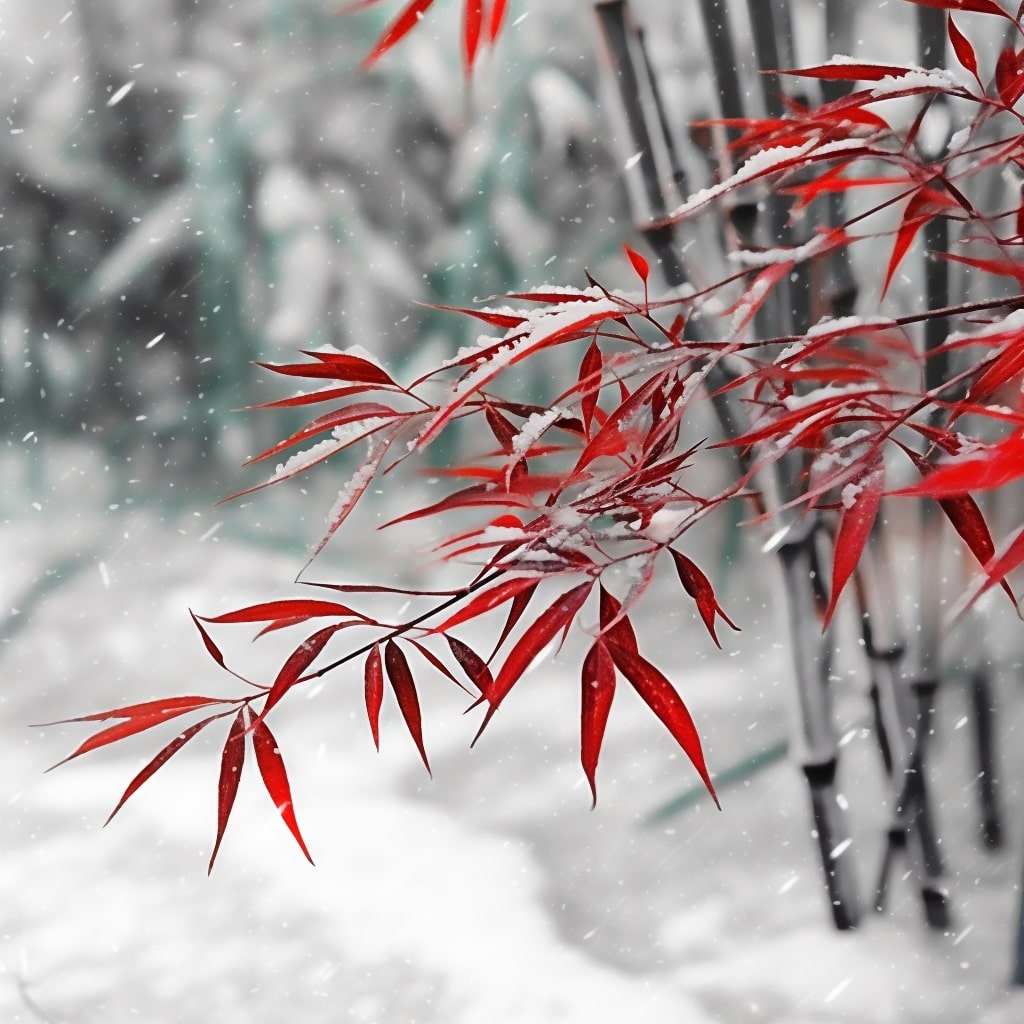Bamboo cultivation in Michigan may seem challenging due to the state’s cold climate and harsh winter conditions. However, with careful selection of cold-hardy bamboo species and proper care, it is indeed possible to successfully grow bamboo in this region.
Key Takeaways
- Cold-hardy species of bamboo like Phyllostachys aureosulcata and Phyllostachys bissetii can grow in Michigan despite the climate challenges.
- Insulating or bringing bamboo indoors during winter, choosing a cold-tolerant species, and providing shade to newly planted bamboo are important for successful growth in Michigan.
- Soil testing, irrigation, and fertilizing the soil can help bamboo thrive in Michigan.
- Planting bamboo in containers or using barriers can prevent it from spreading and becoming invasive.
Bamboo in Michigan
Bamboo can be successfully grown in Michigan by selecting cold-hardy species such as Phyllostachys aureosulcata and Phyllostachys bissetii, implementing proper cultivation techniques, and addressing potential challenges posed by the climate and environment.
The climate suitability for bamboo cultivation in Michigan is determined by its classification as a zone 5 area by the US Department of Agriculture. This means that it experiences winter temperatures ranging from -10 to -20°F.
To ensure successful growth, proper soil preparation is crucial. This includes conducting soil testing to determine nutrient levels and pH, as well as amending the soil with organic matter if necessary.
Additionally, providing adequate irrigation to meet bamboo’s water requirements is essential for optimal growth and development in Michigan’s climate conditions.
Suitable Bamboo Varieties
Red Margin, Bissetii, Golden Crookstem, Incense, Giant Leaf, Yellow Groove, and Ruscus are among the suitable varieties of bamboo that can thrive in Michigan’s climate. These cold-hardy species have the ability to withstand the challenging weather conditions in Michigan. When selecting bamboo species for planting in Michigan, it is important to choose those that can tolerate cold temperatures and harsh winters.

Proper soil preparation is also crucial for successful growth of bamboo in this region. Conducting soil testing and ensuring adequate irrigation will help create optimal growing conditions.
Additionally, regular monitoring for pests and implementing effective pest management strategies are essential for maintaining healthy bamboo plants.
Tips for Growing in Michigan
Cultivating bamboo in the challenging climate of Michigan requires strategic measures and careful attention to detail. To ensure successful growth, it is important to implement specific techniques such as mulching and soil testing.
Mulching techniques help protect the bamboo plants during the winter months by insulating the roots and preventing frost damage. Applying a generous layer of mulch in winter helps maintain soil moisture and protects against extreme temperatures.
Another crucial aspect of growing bamboo in Michigan is preventing invasive spread. Utilizing containers or barriers can effectively contain the spreading tendencies of certain bamboo species, preventing them from encroaching on neighboring areas or becoming invasive.
By implementing these measures, gardeners can successfully grow bamboo in Michigan while mitigating potential challenges associated with the region’s climate and ecosystem.
Planting and Watering
To ensure successful growth and establishment, proper planting techniques and adequate watering are essential for bamboo cultivation in the challenging climate of Michigan.
Soil preparation is crucial before planting bamboo in Michigan. It is recommended to conduct a soil test to determine its pH level and nutrient content. Adjustments can be made by adding organic matter such as compost or well-rotted manure to improve soil fertility.
When planting, dig a hole that is twice as wide as the root ball and spread out the roots carefully.
Watering is vital for bamboo plants, especially during their establishment phase. Water the plants thoroughly at the time of planting and continue to water weekly until they become established. In summer, it is important to provide at least one inch of water per week to keep the plants adequately hydrated.
Mulching techniques can help retain moisture in the soil and suppress weed growth around bamboo plants. Apply mulch generously each spring, but be careful not to cover the base of the plant too deeply as it may lead to rotting or disease development.
Pruning methods should focus on removing dead or damaged culms annually while avoiding excessive pruning that can weaken the plant’s structure.
Following these guidelines will contribute to healthy growth and thriving bamboo plants in Michigan’s climate conditions.
Protecting from Winter Conditions
When it comes to growing bamboo in Michigan, protecting the plants from winter conditions is crucial for their survival.
One key aspect of winter protection is insulating the soil around the bamboo plants. This can be done by applying a generous layer of mulch in late fall or early winter. The mulch acts as a protective barrier, helping to maintain a consistent soil temperature and prevent freezing.
Additionally, it is important to prevent ice buildup on the bamboo plants. While it may be tempting to try and break off frozen ice, this should be avoided as it can cause damage to the plant. Instead, gently shake off any snow weighing down the bamboo without disturbing the frozen ice.
By following these practices, gardeners in Michigan can ensure that their bamboo plants are well-protected during the harsh winter months.
Container Growing
Container gardening provides a versatile solution for cultivating bamboo in Michigan, allowing for easy mobility and protection against freezing temperatures. When growing bamboo in containers, it is important to consider container maintenance to ensure the health and well-being of the plants.



Here are some key tips for successful container growing:
- Choose clumping varieties of bamboo that are suitable for containers and can be easily moved.
- Provide adequate drainage by using pots with drainage holes and adding a layer of gravel or broken pottery at the bottom.
- Use well-draining potting soil that is rich in organic matter.
- Water your container-grown bamboo regularly, ensuring the soil remains evenly moist but not waterlogged.
- During winter, move the containers to a sheltered space or insulate the soil to protect them from freezing.
Container gardening also helps prevent the spread of bamboo. By confining the plant’s roots within a container, you can control its growth and prevent it from invading other areas. Regular monitoring and pruning will help maintain healthy plants while preventing any potential spread.
Indoor care for bamboo includes providing sufficient light, maintaining proper humidity levels, and regular fertilization according to the specific needs of each variety. With proper care and attention, container-grown bamboo can thrive in Michigan’s climate while remaining manageable and contained.
Controlling Growth
One effective method for managing and containing the growth of bamboo plants is by implementing proper barriers or containment systems. These systems are crucial in preventing the spread of running bamboo, which can be invasive if left uncontrolled.
The use of physical barriers, such as underground rhizome barriers or above-ground clumping barriers, can help restrict the growth and prevent bamboo from encroaching into unwanted areas.
In addition to barrier installation, regular pruning techniques are necessary to maintain and control the size of bamboo plants. Pruning should be done annually to remove any dead or damaged culms and to thin out dense foliage. This helps promote airflow and reduces the risk of diseases or pests.
Proper soil preparation is also essential in controlling bamboo growth. Before planting, it is important to ensure that the soil is well-drained and fertile. Amending the soil with organic matter, such as compost or well-rotted manure, can improve its fertility and drainage capabilities.
Overall, effective management of bamboo growth involves a combination of barrier installation, regular pruning techniques, and proper soil preparation. By implementing these measures, individuals can successfully control the spread of bamboo plants and prevent them from becoming invasive species in Michigan’s ecosystem.
Conclusion
In conclusion, growing bamboo in Michigan is possible with careful consideration and proper techniques.
By selecting cold-hardy species, insulating or bringing bamboo indoors during winter, providing shade and protection from wind, conducting soil testing and irrigation, planting in containers or using barriers, and implementing regular monitoring, pruning, and pest control measures, successful cultivation can be achieved.
It is important to adhere to local laws and consult experts to prevent invasive spread and protect native ecosystems.
With these strategies in place, bamboo can thrive in the Michigan climate.

